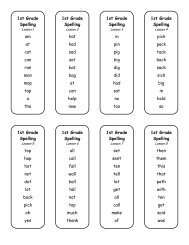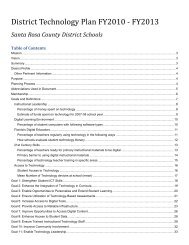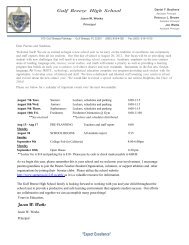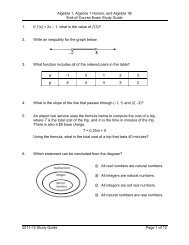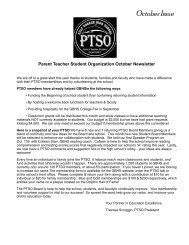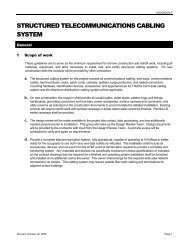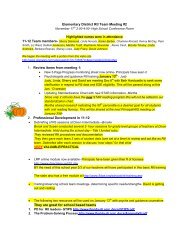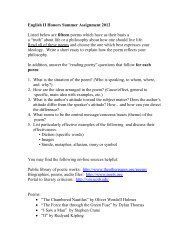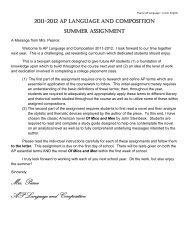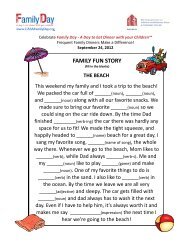Total Physical Response (TPR) (VII HO12)
Total Physical Response (TPR) (VII HO12)
Total Physical Response (TPR) (VII HO12)
You also want an ePaper? Increase the reach of your titles
YUMPU automatically turns print PDFs into web optimized ePapers that Google loves.
Empowering ESOL Teachers: An Overview Section V.U.3 Handout 12<br />
Working<br />
with Shapes<br />
Another idea is to cut squares, rectangles,<br />
triangles, and circles out of various colors<br />
of construction paper and distribute them<br />
to the students. Shapes (hold up the<br />
triangle), colors (hold up the green<br />
triangle), and numbers (hold up three<br />
triangles) can be taught or reinforced.<br />
Ordinal numbers can also be introduced<br />
by placing several shapes in various<br />
positions along the chalkboard. A student<br />
can be asked to place the green<br />
triangle in the third position or the eighth<br />
position. For example, each student in<br />
the class can then be given a small box of<br />
crayons or colored pencils and a handout<br />
with rows of squares, rectangles, triangles,<br />
and circles drawn on it. Commands<br />
such as “Find the first row of<br />
circles. Go to the fifth circle, Color it red”<br />
can be given to reinforce not only the<br />
shape, but the ordinal number and the<br />
color.<br />
written recipe. An extra large version to<br />
which you and the students can refer can<br />
be placed at the front of the room. While<br />
you or a student reads the recipe, other<br />
students can measure, mix the ingredients,<br />
and so on. As a follow-up, students<br />
can bring in favorite recipes to share,<br />
These can be put together to form a class<br />
recipe book to which others can be<br />
added.<br />
As a follow-up, students can cut out of<br />
old magazines pictures of objects that<br />
have shapes similar to those mentioned<br />
above. Another follow-up might be to<br />
have students cut the various shapes<br />
from colored poster board, newsprint,<br />
or wallpaper. Have them arrange the<br />
shapes into a collage.<br />
Following<br />
Recipes<br />
At much later stages, making holiday rice<br />
cakes, baking valentine cookies, or<br />
preparing enchiladas can provide a <strong>TPR</strong><br />
experience and can also involve students<br />
in the cultures of other countries and<br />
those within the United States. First<br />
display all the ingredients for any given<br />
recipe and introduce each item, one by<br />
one. Then present each student with a<br />
Excerpted frem:<br />
Richard-Amato, P. A. (1988). Making it happen:<br />
Interaction in the second language classroom-<br />
- from theory to practice, White Plains, NY<br />
Longmans, Inc., pp. 76-78 Reprinted with<br />
permission.<br />
<strong>VII</strong>. Integrating Language and Literacy 143




